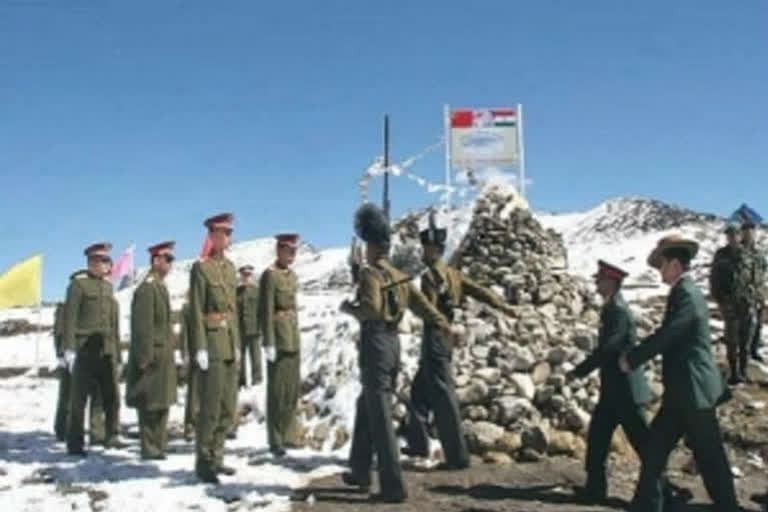New Delhi: While the ongoing faceoff at Patrol Point 15 (PP 15) northwest of the Gogra-Hot Springs area in eastern Ladakh is expected to be the top agenda item in the 13th round of commander-level talks between the Indian and Chinese militaries slated to begin from 10:30 AM on Sunday in Moldo, de-escalation in the broader context of the Indo-Chinese border is still a very far-off cry.
At around the same time that the border row began last year, the PLA had ‘ingressed’ about 2-4 km down the Kugrang river valley effectively blocking off Indian patrolling to PP 15 and PP 16. The Chinese ‘ingress’ has resulted in blocking off Indian access to about 130 sq km of the valley.
PP 15 is located in the general area of Cheng Chenmo valley also called Tsog Tsalu area. The disputed Hot Springs and Gogra are also located in the same stretch. At PP 15, troops of the two sides continue to face each other in a confrontationist mode here.
With existing perceptional differences of the border in the complex terrain, both sides have taken recourse to tackling one zone of conflict at a time which has yielded incremental advances at best.
Ever since the border row snowballed into a huge mobilization effort by the two Asian giants since April-May 2020, an unprecedented build-up of troops, military equipment and war-stores and infrastructure by the two sides has militarized eastern Ladakh like never before.
What would likely soft-paddle the de-escalation is the fact that since last year quite a lot of infrastructure has already been set up by both the warring sides in the high-altitude and geographically difficult terrain. Having already faced one winter would prepare those deployed in a much better-prepared mode.
Sunday’s talks will begin in the backdrop of reports of a recent face-off between the two sides in the eastern sector and a transgression by the PLA in the central sector of the Line of Actual Control (LAC).
Read: Territorial Army marks 72nd Raising Day, pay tributes to fallen brave hearts
Last week, reports of a “chance” encounter between patrol parties of the two sides led to a minor face-off near Yangtse in the Tawang sector in Arunachal Pradesh. Indian Army sources played down the incident as a “routine” one. An army official stated: “Both sides patrol. Just that in this instance, the patrols happened to meet”. For good measure, the official added: “However there was no damage to defences.”
The August 30, 2021, incident at the Barahoti pasture in Uttarakhand’s Chamoli district involved a transgression by about 100 PLA soldiers with about 55 horses when they came about 5 km inside Indian territory after crossing the Tun Jun pass. They hung around the area for a few hours damaging a bridge and other India-built makeshift infrastructure.
Sunday’s talks in the Chinese military garrison of Moldo, across India’s Chushul, would be the 13th round. The earlier 12 rounds had taken place on July 31, April 9, June 6, June 22, June 30, July 14, August 2, September 21, October 12, November 6, January 24 and February 20.
The Indian side is led by the commander of the Leh-based 14 Corps while the PLA is led by the commander of the PLA’s South Xinjiang Military District. The other participants include senior diplomats, border security officials, and local officials.
The agenda of the Indian side is laid down by the China Study Group (CSG), a high-level group headed by the National Security Advisor with the cabinet secretary, home secretary, foreign secretary, defence secretary, vice-chiefs of the Army, Navy and IAF, and the chiefs of the Intelligence Bureau (IB) and Research and Analysis Wing (RAW) as members.
It is only after the agenda is cleared that the military takes over at the ground level to negotiate and take stock of what has been executed.
The 3,488-km-long LAC straddles one of the world’s most difficult and extreme terrains on the Himalayas and is spread across Ladakh (1,597 km) Uttarakhand (345 km), Himachal Pradesh (260 km), Sikkim (198 km) and Arunachal Pradesh (1,126 km).
Read: Taliban say they won't work with US to contain Islamic State



